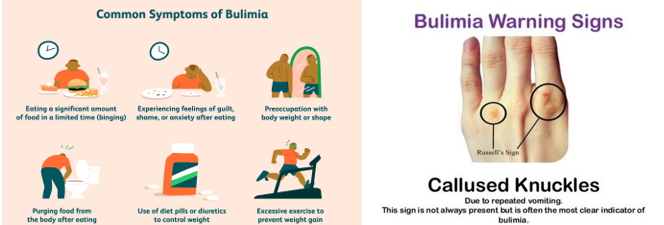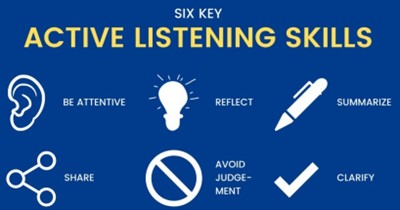Which is associated with bulimia nervosa?
Very low BMI
Decreased size of parotid glands
Calluses on the hands and fingers (Russell's sign)
Fluid and electrolyte overload
The Correct Answer is C
Russell’s sign is a physical symptom that is associated with bulimia nervosa. It refers to the presence of calluses on the knuckles or back of the hand that are caused by repeated self-induced vomiting.
Option a. Very low BMI is not typically associated with bulimia nervosa. People with bulimia nervosa may have a normal or above-normal BMI.
Option b. Decreased size of parotid glands is not associated with bulimia nervosa. In fact, people with bulimia nervosa may have an enlarged parotid gland due to repeated vomiting.
Option d. Fluid and electrolyte overload is not typically associated with bulimia nervosa. People with bulimia nervosa may experience fluid and electrolyte imbalances due to repeated vomiting and laxative abuse.

Nursing Test Bank
Naxlex Comprehensive Predictor Exams
Related Questions
Correct Answer is D
Explanation
During a crisis, the client may be at risk of harming themselves or others. The nurse should take steps to ensure the safety of the client and those around them. Once the immediate safety concerns have been addressed, the nurse can then focus on identifying the cause of the client’s anxiety and helping them develop coping skills.
Correct Answer is A
Explanation
This technique is known as reflective listening or active listening, and it involves paraphrasing what the patient has said to show that the nurse is actively listening and trying to understand the patient's feelings and thoughts. It demonstrates empathy and helps to build trust between the nurse and patient.
Option b is not effective because giving advice and opinion can convey a lack of interest in the patient's feelings and thoughts.
Option c is not ideal because it is a closed-ended question that may limit the patient's response.
Option d may also seem insincere and may not reflect a genuine interest in the patient's concerns.

Whether you are a student looking to ace your exams or a practicing nurse seeking to enhance your expertise , our nursing education contents will empower you with the confidence and competence to make a difference in the lives of patients and become a respected leader in the healthcare field.
Visit Naxlex, invest in your future and unlock endless possibilities with our unparalleled nursing education contents today
Report Wrong Answer on the Current Question
Do you disagree with the answer? If yes, what is your expected answer? Explain.
Kindly be descriptive with the issue you are facing.
